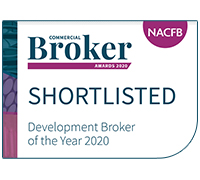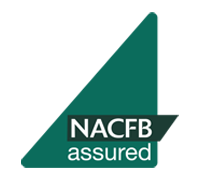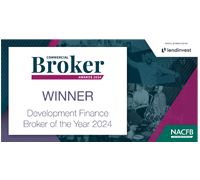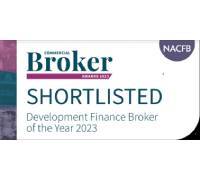Apply Online
The Complete Guide to Bridging Loans
What is a bridging loan?
A bridging loan gives people short-term access to money at an interest rate. They are most often used as a way of purchasing a new property while waiting to sell your current home.
As well as providing home-movers with a way of bridging the gap between selling a property and moving to a new location, they can also be useful commodities for people buying at auction or are planning to quickly flip a recently renovated home.
Bridging loans give you access to huge sums of money, between £25,000 and £250 million, depending on the valuation of your property. Putting a number of properties forward will allow you to borrow even more, with lenders providing you with a quote based on the loan-to-value (LTV) that can range up to 80% of a property’s value.
What types of bridging loans are there?
As there isn’t a ‘one size fits all’ loan, it’s important that you familiarise yourself with the different types of bridging loans available to you. By doing your research, you can ensure you’re choosing the right type of loan for your situation.
Fixed-rate
All bridging loans are set at fixed-rate, meaning that the same rate of interest will be set across the duration of your loan, making your payments the same each time. The benefit of a fixed-rate loan is that you know exactly how much you’re repaying, giving you more certainty over your finances.
Closed-bridge and open-bridge loans
Closed-bridge loans are for people who have a clear exit strategy and a fixed date for repaying their loan. An example of this scenario is when someone selling a property has signed contracts but is still waiting on payment which will be used to pay off the bridging loan.
An open-bridge loan, on the other hand, is riskier, as there is no set date for paying off the loan. These situations usually happen when people want to buy a new house but have not yet sold their current property. Another example is an investor looking to renovate a property before selling it and repaying their loan.
Developer exit bridging loans
Also known as development exit finance, this type of loan is used to repay outstanding finance against a property development once the project is complete. These are most commonly used when a developer has built properties on a development facility, but they need more time to sell.
With a developer exit bridging loan, applicants can give themselves more time to make sales, reduce their rates lower than traditional development finance and free up funds to begin working on their next project.
How long does a bridging loan take?
When applying for a bridging loan, you can typically expect to receive a decision within just 24 hours of submitting your application. In most instances, you’ll then have to wait roughly 14 days for all necessary finance checks and balances to be processed – from property valuations to the money transfer itself.
What are the fees for bridging loans?
As well as the interest that you’ll need to pay, bridging loans also include a number of fees that must be taken into consideration if you’re thinking of applying for a loan. Some of the fees you may be expected to cover include:
- An arrangement fee for setting up the loan – usually 1-2% of the total funds you borrow
- Valuation fees to cover the cost of surveyors
- Some providers charge for an early exit fee for paying off your loan early – usually 1% of the total funds you borrow
Bridging loan examples
Here’s a typical example of a bridging loan to help you visualise how much you could end up paying overall. In this instance, we’ve compared a loan of £100,000 at two different interest rates.
| Loan term | 1 month | 6 months | 12 months |
| Interest (0.65%) | £657 | £3,942 | £7,884 |
| Fees* | £2,030 | £2,030 | £2,030 |
| Total to repay | £103,687 | £105,972 | £109,914 |
| Loan term | 1 month | 6 months | 12 months |
| Interest (1.3%) | £1,313 | £7,878 | £15,756 |
| Fees* | £2,030 | £2,030 | £2,030 |
| Total to repay | £103,343 | £109,908 | £117,786 |
*Fees in this example are based on: 1% facility fee, £250 valuation fee, £35 bank transfer fee, £295 admin fee and £450 legal fee. Fees may differ and are based on the value of your property and the size of loan.
The pros and cons of bridging loans
When considering a bridging loan, it’s important to ensure you are aware of the various pros and cons that factor into high-cost transactions. Ensure you know the advantages as well as the risks that can come with opting for a bridging loan.
The pros
- You’ll receive your loan quickly – usually within 14 days
- You can borrow significant sums of money – up to £250 million
- Bridging loans can raise capital when cash flow is tight as there are often no monthly payments to make
- With an increasingly competitive market, bridging finance has never been cheaper – some loans start rates from as little as 0.37% per month
- You may be eligible for flexible borrowing
The cons
- As bridging loans are secured against your property, you could risk losing ownership if you can’t keep up with repayments
- There are fees to take into consideration
- Most loans are short term, meaning any unforeseen speed bumps in your finances could be disastrous when the time comes to repay
- Bridging loans have a higher interest than traditional loans, as you’re paying a premium for flexibility and quick payment
Applying for a bridging loan
Like any financial transaction, it’s crucial that you take everything into account. There are a number of benefits to securing a bridging loan, so make sure you choose the right type of loan for you and ensure that you have planned out your repayment method.
As the UK’s leading development finance and bridging loan specialists, our experts at Positive Commercial Finance can help you find the best financing solution for you and your business. If you have any questions or would like to learn more about bridging loans, don’t hesitate to get in touch.

Product Types
Quick Enquiry






























